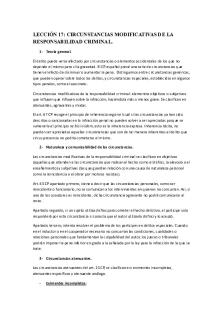lecture 17 notes PDF

| Title | lecture 17 notes |
|---|---|
| Author | Nicola Mc Guigan |
| Course | Applied Genetics |
| Institution | Ulster University |
| Pages | 4 |
| File Size | 337.3 KB |
| File Type | |
| Total Downloads | 10 |
| Total Views | 148 |
Summary
electrophoresis, PCR and RT PCR...
Description
Molecular biology techniques What is electrophoresis:
Electrophoresis: the movement of charged molecules in an electric field Positively charged ions (cations) move to the negatively charged electrode (cathode) Negatively charged ions (anions) move the positively charged electrode (anode)
Electrophoresis- separation: -
Gels are semi-solid matrices that contain pores of distinct size ranges In free solution (friction is negligible): separation by met charge Gel (strong friction + sieving increase with molecule size): separation by net charge and size/shape Molecules of equal shape and charge/mass ratio are separated solely by size due to sieving
Electrophoresis- visualisation:
Stain the DNA molecules to see how far they have run Ethidium bromide for nucleic acids- interchelates between DNA base pairs. Under UV light, emits light
Electrophoresis- applications: -
Results can be analysed quantitatively by visualising gel with UV light and taking picture with digital camera Software can count how many pixels are black and thus give concentrations Concentrations can be shown as a % of a control at 100% e.g. this can then be converted into a concentration in ug/ul
Proteins:Unlike nucleic acids protein may not be negatively charged and proteins have complex shapes Adding SDS to reaction mixes Adds negative charges depending on size Also heat them to make them rod shaped
-
The three steps of PCR: denaturation, annealing, extension:1. DNA templates are heated- denatured at 95degrees in the presence of a very large molar excess of two primers, a heat-stable DNA polymerase and dNTPs 2. Cooling of the reaction allows annealing (hybridisation) pf primers to the template. Each primer binds one of the two template strands to allow amplification of the region between the primers - Theoretically, the two denatured template strands could re-anneal, as well, but the large excess of primers over template as well as short annealing time strongly favours the annealing of primers 3. The reaction is then heated to 72degrees, the optimum temperature for the heat- stable DNA polymerase, to extend the primer - Additional cycles of denaturation- annealing- extension cause the synthesis of large amounts of the DNA fragment
PCR:-
Repeat the cycling:-
Heating (separates the DNA strands) Cooling (allows primers to bind) DNS synthesis (makes more DNA)
PCR- controls and contamination:Control are important to detect contaminations in the lab -
Negative control- should not produce a result Positive control- known presence of gene of interest If contamination detected: Results can’t be reported Change procedures
Reverse transcriptase PCR:
RT PCR allows the use of RNA as starting material for PCR amplifications It is based on the retroviral enzyme reverse transcriptase that copies RNA into DNA
RT PCR can be used to:
Clone a cDNA (making copy or complementary DNA). cDNA made from mRNA- genes that are expressed
Generate a hybridisation probe- generate a section of DNA that will act to detect the presence of nucleotide bases that are complementary to it- find a target Determine the level of a specific mRNA as a measure for the transcriptional regulation of specific gene in different tissues and response to different stimuli
Because RNA is so unstable it can’t be used for analysis Use of RT to convert it into analysed using PCR 2 steps to RT PCR- RT reaction and PCR
Restriction enzymes:
An enzyme which recognises a particular sequence of DNA, 4-8 base pairs and cuts the DNA at this point Produced by bacteria as a defence mechanism Using these enzymes a particular sequence of DNA coding for a particular protein may be isolated and cloned
Applications: -
Cloning Digest section of DNA with r.e. Digest vector with same r.e. Ligate- using enzyme Ligase Analysis of gene mutations MTHFR analysis from practical classes...
Similar Free PDFs

LecciÓn 17 - Lecture notes 17
- 6 Pages

Chapter 17 - Lecture notes 17
- 15 Pages

Chapter 17 - Lecture notes 17
- 7 Pages

LEC17 - Lecture notes 17
- 28 Pages

CH17 - Lecture notes 17
- 17 Pages

L18 - Lecture notes 17
- 2 Pages

Tulips - Lecture notes 17
- 3 Pages

17ATOC - Lecture notes 17
- 4 Pages

Persuasion - Lecture notes 17
- 2 Pages

Lecture Notes 17
- 2 Pages

lecture 17 notes
- 4 Pages

MFS - Lecture notes 17
- 4 Pages
Popular Institutions
- Tinajero National High School - Annex
- Politeknik Caltex Riau
- Yokohama City University
- SGT University
- University of Al-Qadisiyah
- Divine Word College of Vigan
- Techniek College Rotterdam
- Universidade de Santiago
- Universiti Teknologi MARA Cawangan Johor Kampus Pasir Gudang
- Poltekkes Kemenkes Yogyakarta
- Baguio City National High School
- Colegio san marcos
- preparatoria uno
- Centro de Bachillerato Tecnológico Industrial y de Servicios No. 107
- Dalian Maritime University
- Quang Trung Secondary School
- Colegio Tecnológico en Informática
- Corporación Regional de Educación Superior
- Grupo CEDVA
- Dar Al Uloom University
- Centro de Estudios Preuniversitarios de la Universidad Nacional de Ingeniería
- 上智大学
- Aakash International School, Nuna Majara
- San Felipe Neri Catholic School
- Kang Chiao International School - New Taipei City
- Misamis Occidental National High School
- Institución Educativa Escuela Normal Juan Ladrilleros
- Kolehiyo ng Pantukan
- Batanes State College
- Instituto Continental
- Sekolah Menengah Kejuruan Kesehatan Kaltara (Tarakan)
- Colegio de La Inmaculada Concepcion - Cebu



